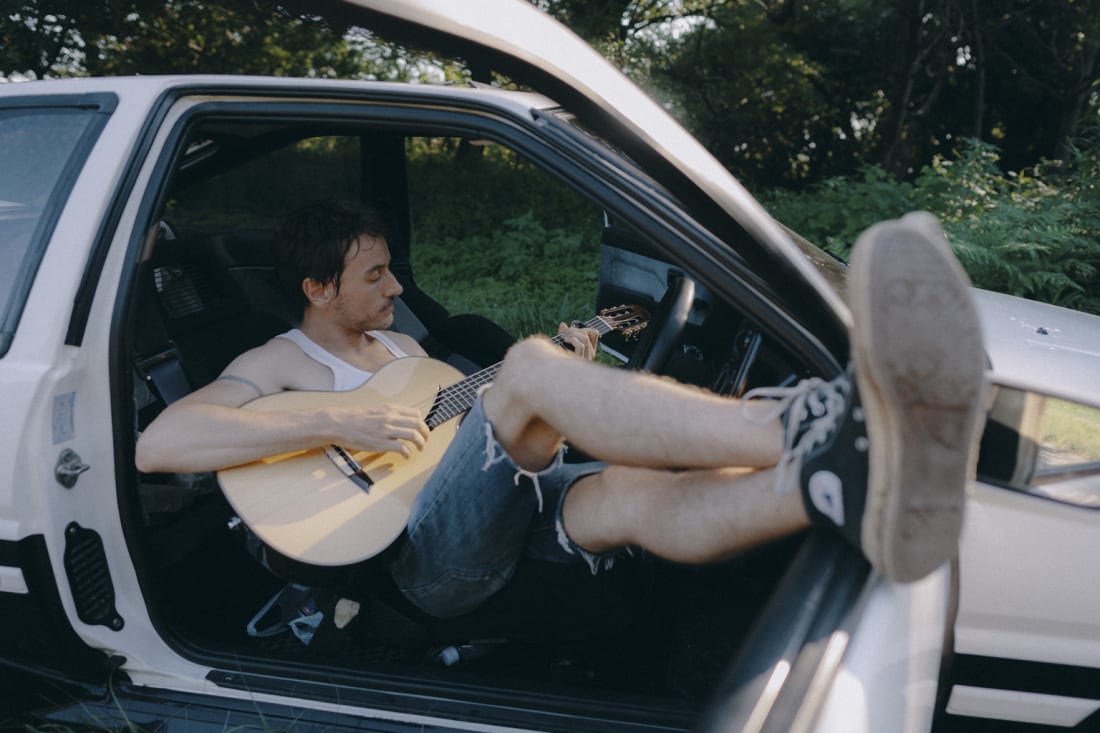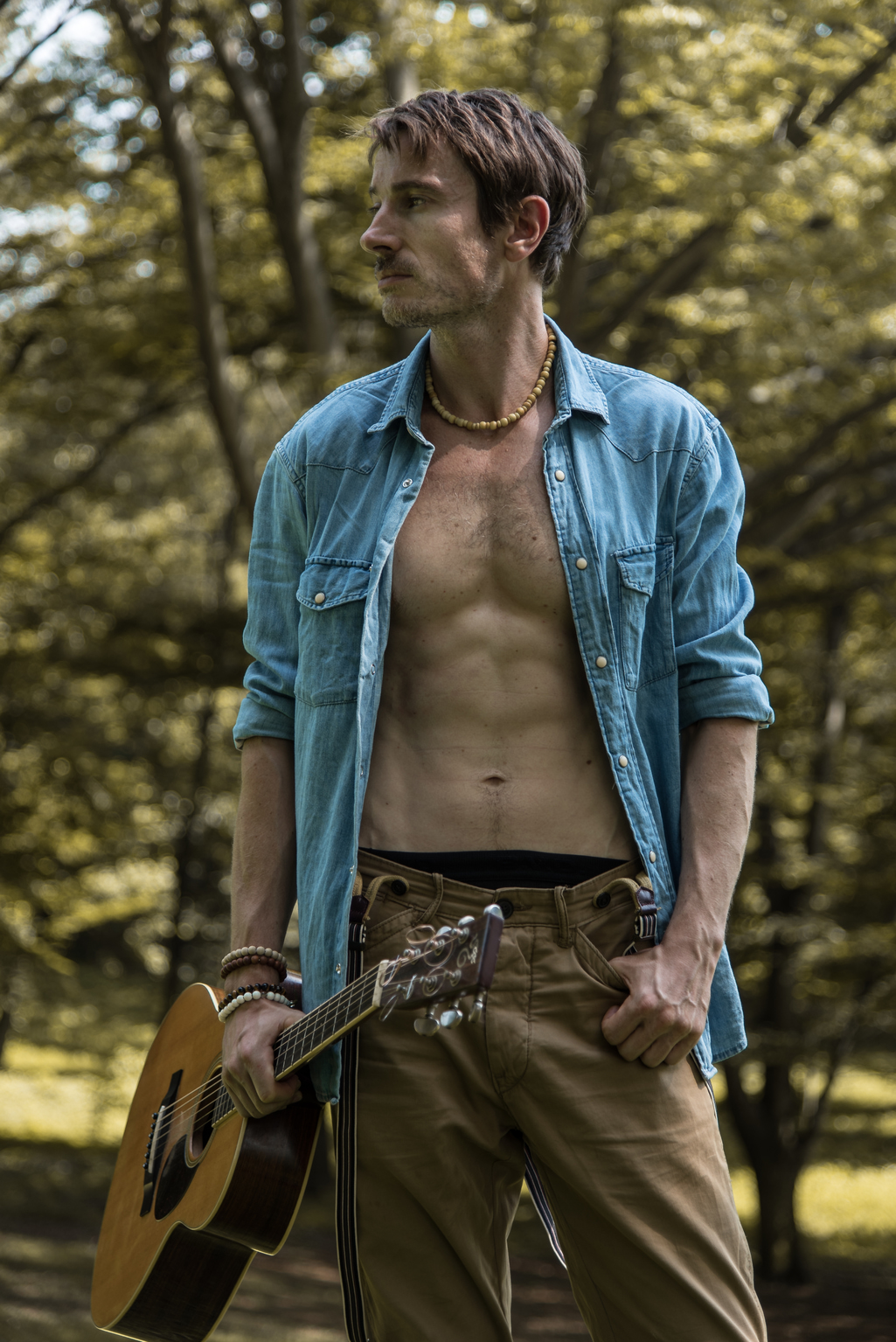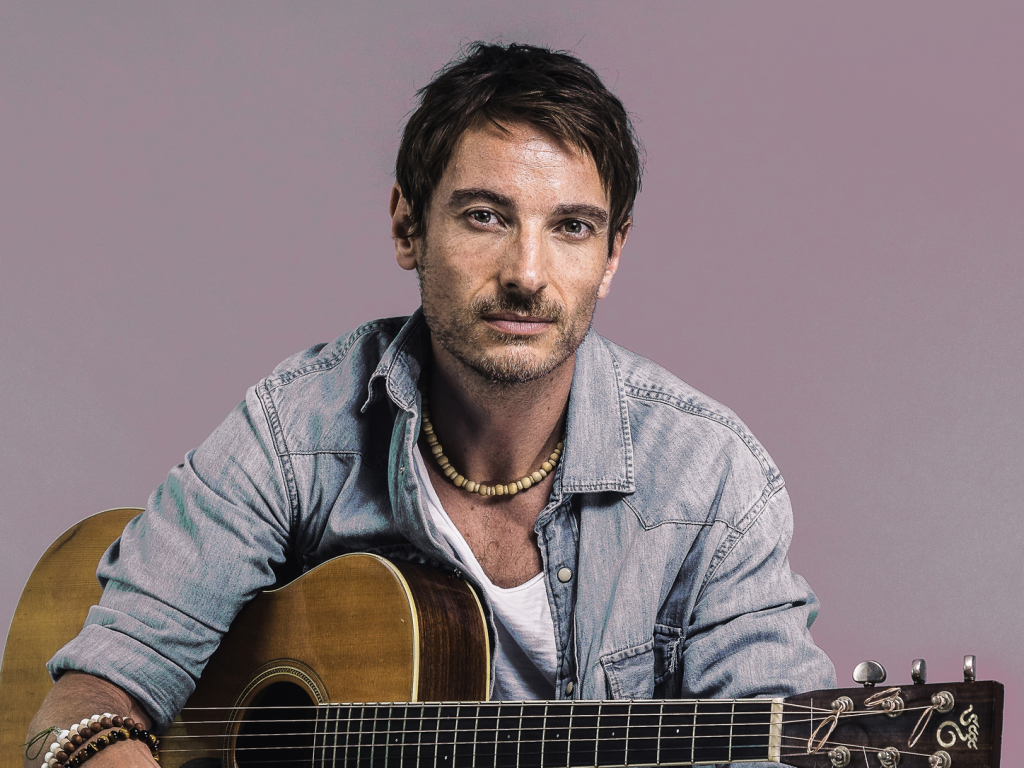Andrew Sloman was filmed sitting in a vintage Toyota 86 in rural Chiba canoodling with a woman who was not his wife.
The filmmaker was director Anshul Chauhan, whose feature film Bad Poetry Tokyo is currently racking up awards at various Japan film festivals. The woman was actress Nagisa Chauveau, who portrays the muse in the music video Chauhan was producing for Sloman’s new song “Burnt,” set to be released September 21 on iTunes and all online stores.
“Anshul was brilliant to work with,” says Sloman, a Tokyo-based singer-songwriter. “Shooting ‘Burnt’ was a really fun weekend filled with laughter and good times…. I’m extremely happy with the result and feel it’s my best offering to date.”
Sloman started his music career in his native England before locating to India and then Japan. He formed the folk-rock group The Kave and gained notoriety in 2012 when a video of Sloman serenading stranded train passengers with his guitar during a typhoon went viral.
It was during a return stint to India that the married father of one was able to connect with accomplished French composer and multi-instrumentalist Mathias Duplessy. Together they produced Sloman’s solo album One and All, set to be released in November 2018, for which “Burnt” is the first official single.
A skilled multi-instrumentalist himself, Sloman’s collaboration with Duplessy resulted in a rich wave of cascading sound punctuated with world beats and enriched by Sloman’s expressive and vulnerable vocals.
“I had always been dying to make an album with an original sound, which was why I was so delighted to work with Mathias,” says Sloman. “Mathias plays more than 40 different instruments from all over the globe, so he really brings a different flavor to my British singer-songwriter style.”
In addition to his solo work, Sloman has a new album with The Kave set to debut later this year, and he’s also paired with singer-songwriter Sophia Nicole to form a folk duo called Yoyogi. The video for their duet, “Forever Now Forever,” performed live fittingly at Yoyogi Park, has tallied more than one million views online.
Amidst all the activity, Sloman took time to answer some questions for TW…

How did you come about meeting Mathias Duplessy?
I was lucky enough to meet his tour manager at a concert in Goa [India]. A couple of weeks later when Mathias was in town working on a movie score, she invited me to a house concert to jam with him. Mathias had never heard my music before but was able to improvise the most incredible melodies I had ever heard. I was in awe at his ability. Even though we come from quite different musical backgrounds, something just seemed to jell instantly.
How did you convince Mathias to produce your album?
After we finished performing that night, he told me he was interested to work more together. He offered to produce one of my songs, “Leave,” so I could see what he had in mind. He asked me to record the vocal and guitar and send it to him on e-mail, ready for when he returned to his studio in France. I recorded the parts at my apartment in Goa and he did the rest in Paris. I was totally in love with the track when he sent it back. It was so groovy and with such a fresh approach. His choice of instruments, some that I had never heard before, really made his production stand out. After hearing it I grabbed the opportunity to work with him with both hands. It was a dream come true to be able to work with a musician and producer of his calibre. Mathias is an incredibly busy composer, producer and performer, so it actually took another two years to complete the project.
What musicians were you listening to as inspiration while you wrote the album?
I was listening to quite a bit of chillout music while I was living in India. I was breaking out some of my old Café del Mar compilation records from the late 90s and early 2000s. When I’m writing I try not to listen to things in a similar genre. I was also listening to some music by a musician I had come across in India called Estas Tonne. He is a sensational guitarist who performs a lot on the streets of Europe.

The One and All album is a departure from your work with The Kave. How has your songwriting on this album evolved?
The Kave’s debut album will actually be out towards the end of this year. There’s a couple of tracks, “Leave” and “Burnt,” which will appear on both albums but done in quite different ways. The rest of The Kave’s album has a lot more of a commercial feel to it than what I have done with Mathias. I deliberately kept to a more radio-friendly songwriting style with The Kave. I would say my offerings with Mathias are deeper. The song selection was really down to Mathias, so it needed to be something that really moved him for him to work on the track. Mathias was always very happy to hear some interesting chord changes, so I tried to push myself to do something a little bit different to what I would normally do.
Please take us through all the instruments featured on the song “Burnt.” Which one was the biggest pleasant surprise?
On “Burnt” I was really happy to hear in particular the sound of the harmonium from India and the Mongolian violin called the morin khuur. The other instruments that Mathias is playing on the track are the balafon and the marimba from Africa, a 60s vintage picked bass guitar, five different cello parts, tremolo electric guitar, and an array of different percussion instruments from all over the world. I’m playing a Taylor nylon acoustic guitar. I’m doing the lead vocals and then Mathias and his sister Camille are doing the backing vocals.
On the video for “Even Flow” [not a Pearl Jam cover], you seamlessly transition from piano to bass to drum machine to guitar and back again. Growing up, which instrument did you learn first?
Growing up we always had a piano and guitars in the house. Both my mum and dad are proficient musicians at the piano and guitar. They both also love to sing, and my mother is a classically trained vocalist. They were in a folk group in my hometown of Bristol, UK, when they were in their twenties. Neither of them took it up professionally but it was always a passionate hobby for them both. My dad would often sit at the piano and play and I would love to sit and watch him. I would also sing with my mum as she played her folk songs on the guitar. From a very young age I would sit at the piano and try to make up melodies, but I think my first piano lesson was at the age of eight. I was terrible student and didn’t enjoy playing what I was told to play. I hated sight reading and really only enjoyed playing things by ear. I think I was 12 when I managed to convince my dad not to take me to piano lessons anymore. Something I regret a little bit now, as I would have loved to have a more in-depth classical training.
At the time I was incredibly passionate about tennis and was playing national tournaments, so I thought that tennis was going to be my career. When I was 14 I started to get into Led Zeppelin, Pink Floyd and a lot of 70s rock ‘n’ roll, so I bought my first electric guitar to teach myself. For my 16th birthday I went to watch Guns N’ Roses with one of my best friends. In the middle of the concert he climbed up on my shoulders as we moshed down at the front. With his weight and all the jumping I injured my back. That was the end of my tennis career. With time on my hands and finding a love for rock ‘n’ roll I got more and more into the electric guitar. I first got my heart broken by a girl around the same time. My parents had also just divorced. I think everything combined really gave me the passion I needed to start writing songs and find an escape. I’ve been writing ever since.
For your song, “Anata No Ai De,” how difficult was it writing lyrics in Japanese?
It wasn’t easy, but with the help of Google Translate, it also wasn’t as much of a challenge as I had anticipated. I feel I’m a bit of an expert with Google Translate these days. Just as long as you keep the sentences pretty short it’s generally quite good. I would keep trying ideas until I was finding sentences that worked together and rhymed. I had a clear idea what I wanted the song to be about, essentially about how “Mondays used to suck until I fell in love, but now with love in my life every day is great.” At the time I wrote it I was having some private Japanese lessons once a week so the first half of the lesson I would get my teacher to read through the lyrics to check that they were making sense. My Japanese is still at a fairly basic level so I’m not one to say whether the lyrics are any good or not. It’s deliberately got a very pop feel to it so I could get some radio play in Japan, which I was very lucky to do.
Andrew Sloman’s single “Burnt” is available on iTunes and all online stores from September 21. His solo album One and All will be released in November.
Upcoming Shows
• The Kave, October 13, Crawfish, Akasaka
• The Kave, October 19, Terra Live Spot, Nishi-Ogikubo, single release party for “Somewhere To Go”
• Solo show, October 25, Grand Cru Glamorous Blue, Yokohama








